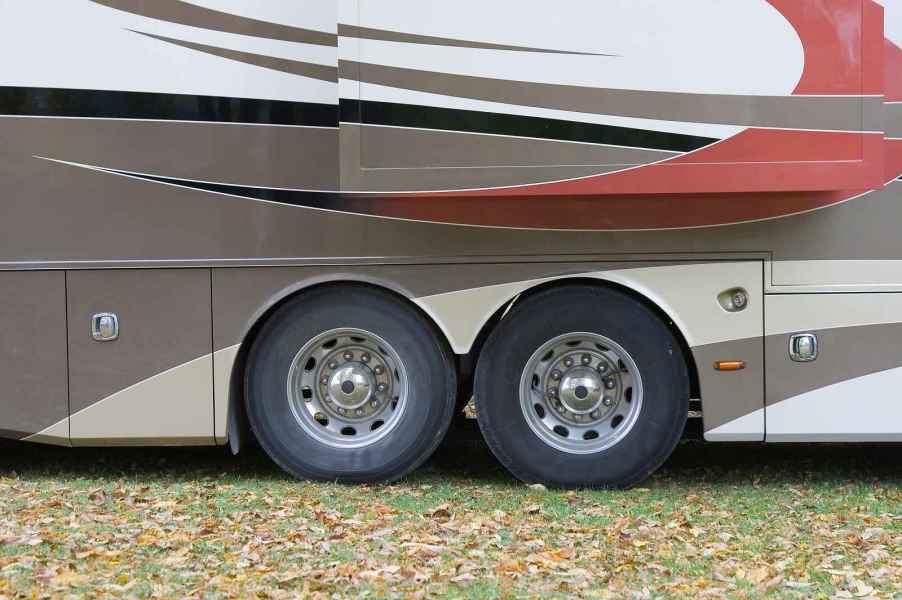
How Many Axles Does an RV Have?
How many axles are on an RV isn’t typically something given much thought — until you encounter a toll road. The number of RV axles determines the price you pay to pass. So, just how many axles does an RV have?
How can you tell how many axles are on your RV?

Determining the number of axles on your RV is simple. Just count the number of wheels on the outermost portion of one side of your motorhome. For instance, if your RV camper has two sets of wheels on the driver’s side, one in the front and one near the rear, your RV has two axles. If there are three sets of wheels, it has three axles.
To note, it’s important to only count the number of wheels or wheel sets on one side of the RV. An axle has wheel(s) on each side, so you should only count the number of wheels on one side of the RV to get an accurate figure. Imagine an axle as a barbell with weights on each side. The barbell acts as the axle, and the weights serve as the “wheels.”
How many axles are on an RV?
An axle is the critical component of an RV. It’s essentially a rod, creatively dubbed the axle rod, that has one or more wheels on each end. The axle(s) allow the wheels to rotate while supporting the weight on an RV. Without them, an RV would effectively be an immobile trailer.
But just how many axles an RV has depends on the specific model.
Class A motorhomes are the largest RVs available. Those, and other motorhomes with their own engines and drivetrains, have either two or three axles. Models with two axles have one at the front and one near the rear, just like a passenger car or truck. Three-axle models have one at the front and two near the rear of the RV. In this design, one axle is placed just in front of the other.
Class C motorhomes are smaller and more lightweight than Class As. As such, they only include two axles — front and rear.
Class B RVs are often referred to as camper vans. Like minivans or work vans, they include one axle at the front and another at the rear.
Trailers are another classification of RVs that are towed by a separate vehicle. Again, their number of axles is dependent on the model in question.
Travel trailers and pop-up campers are the smaller segments of towable RV trailers. They typically have a single axle near the middle or rear of the trailer, though some may include two axles.
Large fifth-wheel trailers have two axles near the rear of the trailer, although some smaller models only include a single axle.
What are the types of trailer axles, and which 1 is best?
There are two main types of RV axles — spring and torsion axles.
A spring axle uses curved metal spring leaves, typically over the springs, to reduce the ride height. Spring axles are the most common type of RV axles as they are less expensive than torsion axles and are easier to maintain. However, they are more susceptible to rust and breakage in some environments, especially near saltwater.
Torsion axles don’t include metal springs, and therefore they are less susceptible to wear and tear. However, they are generally more expensive and difficult to repair than spring axles.
A torsion axle includes a square cross member spanning the distance between the wheels or a cross member for each wheel. Inside the cross member is a square component that rotates and is surrounded by four long rubber cords called torsion bars. As the internal square rotates with the wheel, it flexes against the torsion bars. This brings the wheel back to its “center” position to essentially smooth out the motorhome’s ride.
What determines the number of axles on a vehicle?
The number of axles on an RV isn’t arbitrary, it’s based on the weight of the camper, RV, or trailer. The higher the weight of the motorhome, the more axles it will have to keep the load capacity on each tire at a safe level.





